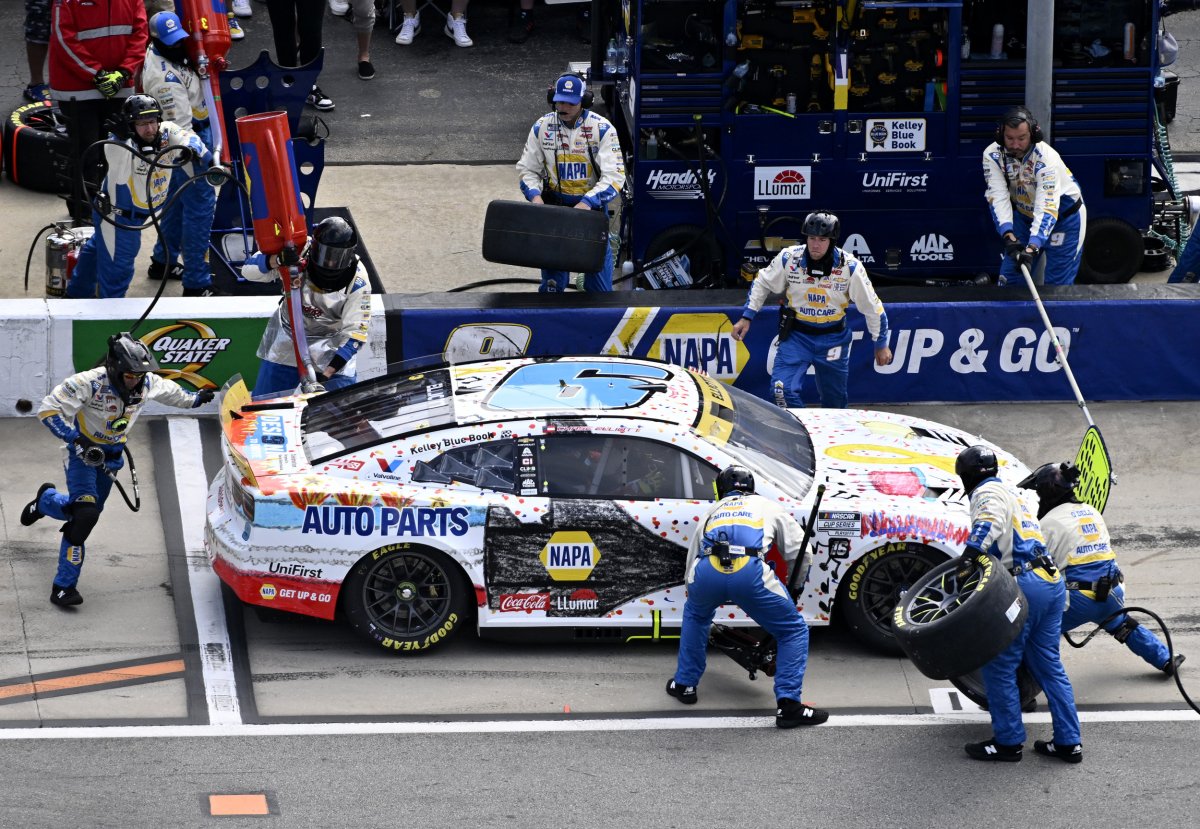During “The Teardown” podcast with Jeff Gluck and Jordan Bianchi of The Athletic, NASCAR driver Chase Elliott revealed his thoughts on the potential changes to tire compounds for the playoffs leading up to the Go Bowling at the Glen race this weekend. I think it’s safe to say that he isn’t a fan of the potential changes.
“We’re creating this drama with the rounds and so on and so forth. I think the option tires should be the least of our concerns as something that is an issue in that category,” he said.
Elliott did however concede that there could be scenarios where new tire compounds might create compelling storylines and improve the competition for viewers.
“I do think there are places that it probably would end up being a good thing and could potentially be a decent storyline to follow.”

Logan Riely/Getty Images
Using Richmond as a case in point, he reflected:
“I thought it went okay at Richmond. I could see both sides of the argument, one side being that you just have a softer tire in general. Does that help the racing?
“I could see that. I could certainly see that getting Goodyear to buy into having some failures though is going to be a hard thing to sell them on because that’s probably going to happen with it.”
Elliott further elaborated:
“So once that happens once or twice, that’s not going to come back. Is that realistic? But I could also see having something different potentially being an okay thing because the cars are going to keep getting more the same, we are more the same every week. How are you going to be different?
“How can you spice up a race to have some comers and goers like we used to say throughout a 400 or 500-mile event?”
Goodyear has introduced a new tire compound for the Watkins Glen race this Sunday, aiming to bring fans a more entertaining spectacle of a race. Greg Stucker, Goodyear’s Director of Racing, said the following, via NASCAR:
“In our ongoing efforts to introduce more fall-off, we tested at Watkins Glen in June and came out with a new tire that will accomplish that goal.”
The introduction of this new compound is expected to generate approximately three seconds of fall-off per lap over the race duration, a significant factor poised to influence team strategies going into the weekend.
Stucker highlighted the potential impact:
“Based on our test and a subsequent WFT (wheelforce test) with the manufacturers, we should see around three seconds of fall-off per lap over a run.
“That, of course, can mean more passing throughout the race. It’s always tricky on road courses as drivers take advantage of a limited number of ‘passing zones,’ so the increased fall-off should lead to more comers and goers as some drivers manage their tires and gain on the field as the runs go on.”
The broader significance of these developments cannot be understated. Different tire strategies have the potential to introduce layers of strategic depth to NASCAR, influencing crucial aspects of race planning and execution. Similarly to F1, its drivers don’t want to add drama for the sake of drama, so the debate is still ongoing.





